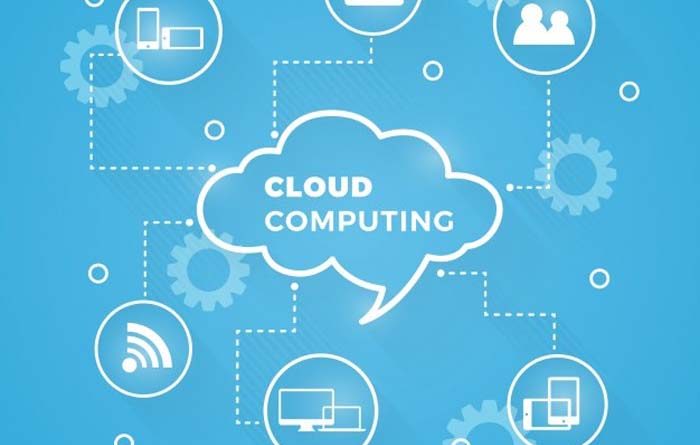
Background
Cloud computing is not an option anymore, rather it is the standard for businesses to run their applications. Cloud computing helps orchestrates IT infrastructure and provide IT services as a commodity on a services based model. For businesses either renting these services or owning them privately, it is implied that the Cloud Services Provider provide insights with respect to resource utilization and metering for capital management and auditing.
Each cloud services provider has its own way of deploying resources and metering them, and that differs from the traditional IT business model, from procuring resources to providing them for deploying services. Improved IT infrastructure management, granularity in resources metering and ability to determine expenditure per service, changes the capital expenditure model to an operational expenditure model.
CIOs who know where their money comes from are in better control of their finances. Chargeback or show back can help to engage the business in IT spending and value, but the effort must be worthwhile. Some CIOs simply want to stop the business consuming more and more IT while blaming them for the cost and asking them to make it cost less.
Well-implemented chargeback can make the relationship between spending and revenue more transparent and intuitive. This reduces the need for expensive governance committee meetings and management interventions, freeing the organization to focus on optimizing all business spending.
Chargeback is often a source of contention between IT executives and business leaders, but it need not be. CIOs can use chargeback to transform their team’s relationships with business stakeholders, improve financial transparency, and gain additional funding.
As a cost-center, IT budget always comes from chargeback against the organization’s business revenue, even in cases where the IT organization does not directly chargeback for IT services.
Organizations that lack financial transparency in their services delivery are vulnerable to time consuming audits and unbudgeted tax invoices.
Public cloud service providers, handle the overhead of managing IT hardware infrastructure while organizations can focus on their core business functionality. Private cloud owned by organizations, the entire stack is managed by the owner or outsourced to third party service integrators. In both cases regular insights on resources metering with respect to cost is required for planning and correct strategic decisions.
Efficient IT infrastructure management is incomplete without aligning IT resources with cost. It is also essential to map the consumption of these resources per user in order to determine efficiency and profitability. Gathering data and generating insights is necessary for continuous improvement and getting maximum returns on investments.
Multi-Billing in eNlight 360
eNlight 360 come out of the box with cloud metering and billing. Being a leader in Cloud orchestration software, eNlight 360 provides IT infrastructure management, enables application deployment on virtualized resources, multi-tenant operations and Multi-Billing models.
At the base level eNlight 360 provides virtual machine resources metering. Real time processor, memory, disk and bandwidth utilization is provided for static as well as dynamically auto-scalable virtual machines. These resources can be directly mapped with per unit utilization and that provides statistics with respect to monetary utilization of resources.
eNlight 360’s Multi-Billing module combined with multi-tenant architecture, enables businesses gather monetary resource consumption statistics at a business unit, department and individual user level. eNlight 360 provides multiple billing models, which suite almost all business models, they are:–
- Dynamic Pay-Per-Consume
- Fixed Pay-Per-Use
- Service Based Billing
Dynamic Pay-Per-Consume Billing
Charging resources based upon consumption against allocation is Dynamic Pay-Per-Consume Billing. Dynamic Pay-Per-Consume billing leverages eNlight 360’s Auto scaling technology to provide chargeback mechanism for IT resources based upon consumption rather than allocated resources.
eNlight 360 enables users to deploy auto-scalable virtual machines that scale dynamically as per resource requirement. Compute resources are allocated and deallocated from the virtual machine in real-time. Due to auto scaling virtual machines can run at bare minimum resources and can demand resources as and when required. For example, a virtual machine can run with minimum 2 vCPU and 2GB RAM at 02.00 am and can demand 4 to 6 vCPU and 12 to 16GB RAM in the peak time at 12.00 pm. This leads to dynamic resources utilization, having wavy resource utilization graphs.
eNlight 360 allows billing of such dynamic resources at the granularity of minutes. Dynamic virtual machines are provisioned with min / max resource capping. These virtual machines scale between the min / max resource caps. At any point the virtual machine would be consuming resources in between that resource capping. In this case dynamic Pay-Per-Consume billing allows dynamic resource metering and charge these consumed resources based upon the per unit rates defined in eNlight 360’s chargeback system.
eNlight 360’s Auto scaling enables to achieve greater server consolidation ratio while Dynamic Pay-Per-Consume Billing enables cloud resource metering based upon consumption for these auto scalable virtual machines.
Fixed Pay-Per-Use Billing
Charging resources based upon allocation is Pay-Per-Use Billing. Essentially it is direct billing based upon the units allocated from the pool of cloud resources. As opposed to Dynamic Pay-Per-Consume billing, Fixed Pay-Per-Use billing charges resources based upon their allocation. This is the conventional billing model that the entire cloud market implements.
In eNlight 360, a virtual machine with fixed resources can be provisioned which are known as Static Virtual Machine. For example, a VM with 8 vCPU and 12 GB RAM. The resource consumption of static virtual machine is equals to the allocated resources. This leads to fixed resource utilization, where the resources can be charged on fixed flat rates.
Services Based Billing
Charging tenants based upon service deployment is Service Based Billing.
In eNlight 360, a service can be deployed in the form of group of related resources. For example, Mail service which consists of email server and backup servers. And this group of resources can be charged flat based upon the charges and policies defined in eNlight 360’s Billing system.
Service Based Billing is different from Pay-Per-Consume and Pay-Per-Use in a sense that it enables to set flat rates and charge group of services based upon these rates defined in the system. This flat chargeback model allows to group application deployments and resources under one common financial entity and simplify billing of related resources.
Conclusion
Cloud is de facto approach to deploy services and manage IT infrastructure, and having a clear view of resource metering from a financial perspective is critical. eNlight 360 provides multiple options a chargeback models that suits almost all business requirements. Service Based Billing enables charging group of resources with fixed flat rates across different services deployed across departments or business units.
eNlight 360 provides highly granular resource utilization metering which can be charged using Pay-Per-Consume and Pay-Per-Use billing models. Pay-Per-Use billing provides more control and better granularity in terms of charging IT resources. These resources are charged against static utilization while different rates per unit can be configured in the system. Dynamic Pay-Per-Consume billing model is exclusive to eNlight 360 which leverages the eNlight 360’s patented Auto scaling technology to provide chargeback mechanism for dynamically scaled resources in real time.
With eNlight 360’s, Multi-Billing combined with Multi-Tenant architecture CxO’s can experience the next generation IT resource management from a single cloud management portal.
About US:
With eNlight 360’s, Multi-Billing combined with Multi-Tenant architecture CxO’s can experience the next generation IT resource management from a single cloud management portal. For more information, visit us at: cloud services India AND eNlight 360




